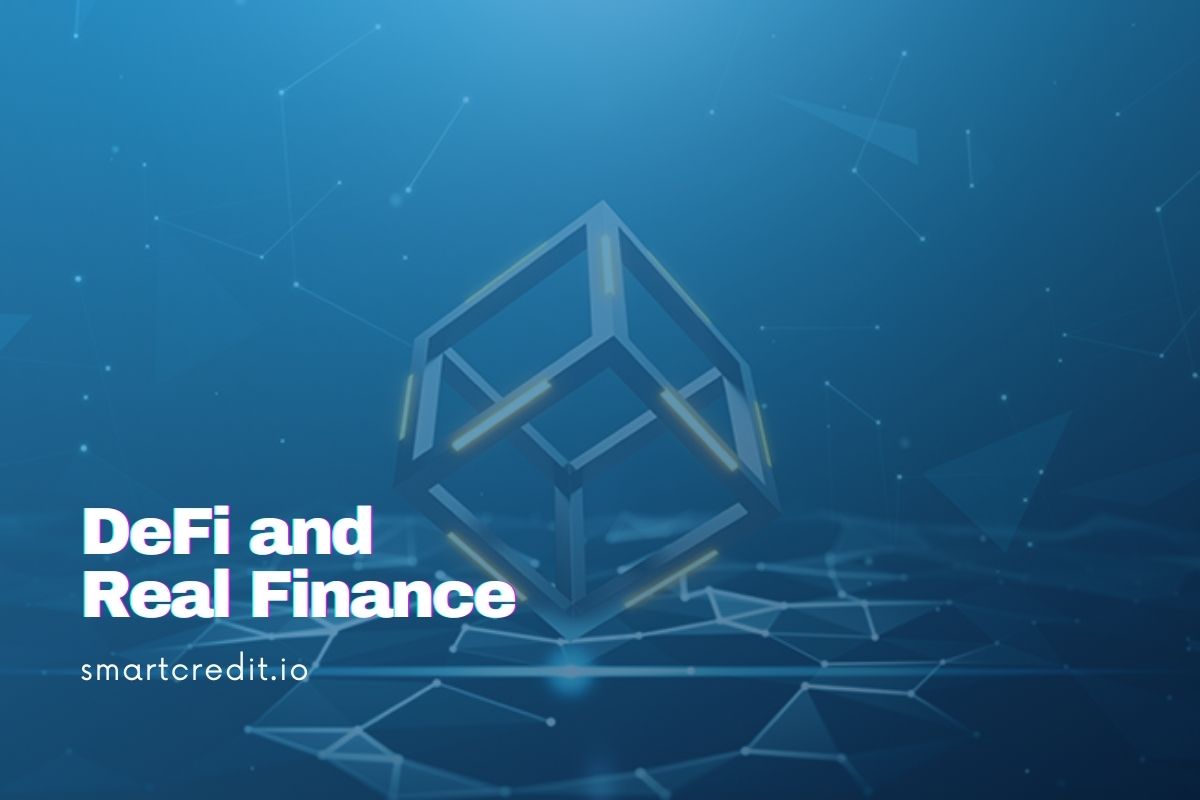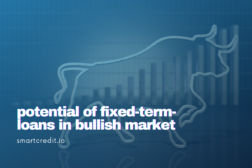DeFi has done major steps in the last 6 months, but can the DeFi scale to real finance? What should be added to DeFi to become more scalable? This article looks at where DeFi stands on what should be added to DeFi.
Where is DeFi now?
DeFi today offers the following capabilities for the users
- Money-market-fund based borrowing and lending
- Exchange of assets
- Leveraged trading
- Derivatives
DeFi investors can earn via providing liquidity into the:
- Money-market funds and earning the borrowers interest payments or
- Decentral exchanges/leveraged trading/derivatives and earning the service fees
- Yield farming, which in the end invest in different liquidity pools
Additionally, the investors and users earn as well the platform tokens, which have a monetary value.
What is missing in DeFi?
Real finance will need more than today’s DeFi is delivering. It’s about scaling; it’s about real financial infrastructure.
The key elements, which need to be addressed are:
- Regulations – use business models, which are regulatory compliant
- Fixed Income – not just the money-market-funds, but the real fixed-income-funds
- Exchanges – not Automated Market Makers (AMM) based, but order book based exchanges
- Crypto Credit Score – for separating good and less good borrowers
- Fiat Integration – bridge to the old financial world and bring more new users into the ecosystem
Regulations
DeFi today is driven by the:
- Believe that everything has to be on the blockchain
- DeFi governance tokens
The thinking is that full blockchain-based open source solutions and fully decentralized governance help to avoid regulations. This means the source code is open-source, and the ownership belongs to the community. And the regulators will not have any touchpoints so. Our comment to this storyline is simple – it should be transparent to everyone after the late Bitmex case that this story does not hold.
If we say it transparently, then the key driver has been to bypass the regulations. Let’s look at this in detail:
Everything has to be on the blockchain.
The viewpoint is that by having everything on the blockchain, there will be no hook for the regulators to stop the DeFi protocols. This is so because these are smart contracts on the blockchain. And one cannot switch them off.
From a regulatory point of view, it is not important to keep everything on the blockchain. It is important that the platform cannot control the client assets. A DeFi platform can have some logic on-chain and some logic off-chain – as long the platform cannot access the client assets – this does not make any difference from a regulatory point of view.
Just in case, if a platform controls the client assets, for examples like central exchanges or custodial lending platforms, then they will be exposed to a full package of regulations and this not only in one country but in all countries where their clients are located or where they post ads to the retail users. That’s the major issue for the custodial lending platforms or custodial exchanges – see more in our articles “Nexo review – is it safe, should you invest?“ and “Celsius review.”
Emphasizing the need to keep everything on the blockchain is only limiting possible DeFi applications. As said before, one does not need to keep all logic on the blockchain. Even more – by having not all logic on the blockchain, one can deliver fully new products for the DeFi sector. DeFi projects can address the regulations by other means – as SmartCredit.io is doing this – by not pooling assets but by staying strictly in the peer-to-peer world.
DeFi governance tokens
The second way to bypass the regulations is DeFi governance tokens. The thinking is that by having a DeFi governance token, there will be no central point of control, and therefore regulators can not sue anyone. We analyzed this situation in another article – “Why the DeFi liquidity pooling has regulatory risk? What are the alternatives?“. Our answer to the question is simple – the regulator will always have the means.
Let’s look at the regulated activities, for example:
- Compound and Aave are creating DeFi money-market-funds. But money-market-funds are investment-schemes, which pool the assets and offer a return to the retail investors. This is a regulated activity in every country – the fund will need an “investment fund license,” and the fund manager will need an “investment fund manager license.”
- Uniswap and other exchange protocols offer to the end-users the liquidity providing. Uniswap would be pool the end-users funds together, and the service fees would be shared between the end-users. But this is again an investment scheme, which is a regulated activity in every country.
- Uniswap and other exchange protocols might offer access to the tokens, which are deemed securities. Offering securities trading platforms is a regulated activity.
- Synthetix and other derivatives protocols offer access to derivatives. But this is an even more regulated business than the securities.
Our view is that DeFi will find ways to have more alignment with the regulations. However, this means that some existing DeFi business models need to be re-visited.
Fixed Income
Let’s look at this from the point of traditional finance – fixed income is a significant sector. The global bond market is twice the size of the global equity market. However, the crypto fixed income is de-facto missing. Only the crypto money-market-funds (Compound, Aave, etc.) are there. The only exception is the SmartCredit.io platform, which offers fixed interest loans, fixed-term loans, and fixed-interest loans.
Why is this so?
One of the reasons is that it’s easier to implement the money-market-funds (like Compound or Aave) than the fixed-income funds. Let’s look at how the money-market funds are working:
- Lenders store their funds into one liquidity pool smart contract and receive the ownership tokens in return.
- Borrowers borrow from the liquidity pool against their collateral
- The collateral ratios are hard-coded (this doesn’t happen so in real finance)
- The interest rate is set with hard-coded linear “utilization formulas” (never happens so in real finance – there is a market mechanism in real finance)
- The Borrower’s loan maturity is unlimited
- Lenders can withdraw their funds at any time, but only then when there are free funds in the liquidity pool.
These simplifications have allowed the implementation of 100% of business logic on the blockchain. However, these simplifications have created a regulatory issue with the money-market-funds (see the “Why the DeFi liquidity pooling has regulatory risk? What are the alternatives?“). The response from the money-market-fund providers is to have 100% blockchain-based open-source and governance tokens (that’s from the script “no-one will be responsible to the regulator“).
Additionally, as money-market-fund providers have been successful with their money-market-fund business models, there is no motivation to switch to the real crypto fixed income. But as long there will be fundamentalist requirements that everything has to be on the blockchain, there will be no real crypto fixed-income. Setting fundamentalist requirements only hinders innovation.
Crypto-fixed income requires a lot of data processing, but this is expensive (impossible) to keep on the blockchain. Real crypto fixed-income will need solutions based on the on-chain and off-chain components. But the result is usability and scalability. The result would be scaling the DeFi.
Implementation of real crypto fixed income requires the following features:
- Collateral ratios cannot be hard-coded but are rather driven by the asset volatility
- The interest rate cannot be set with the hard-coded formulas but have to follow the yield curve plus the risk margin, which is crypto credit score specific
- Borrower’s loan maturity cannot be unlimited
- The lender’s loan maturity cannot depend on the remaining funds in the liquidity pool.
- Borrowers and lenders want to fix the loan interest and loan maturity to reduce the risks on both sides – no more fluctuating interest rates and stability.
- No asset pooling because of regulatory issues, but Personal Fixed Income Funds instead.
- Crypto Credit Scoring
This list describes exactly the scope of SmartCredit.io.
Order book based decentral exchanges
Uniswap and the related systems are providing automated market-making (AMM). Uniswap volume has exceeded the Coinbase volume. In parallel to Uniswap, there are many other decentral exchanges, which all focus on the AMM.
However, there is one significant fact to know, which Uniswap states: the AMM can work only if arbitrage possibilities between the AMM exchanges and other exchanges exist. In the real world, this means arbitrage with the central exchanges (i.e., exchanges, which control the client assets). And here, we see that the key elements of DeFi depend on the central exchanges.
Central exchanges are not using the AMM approach, but they use the order book-based approach. The bid and ask orders are stored in the order books. The trades are matched, and trades are executed.
Uniswap, on the other hand, is a simple protocol where the price is set automatically via a simple formula (i.e., there is always a price based on this simple formula). The Uniswap smart contracts run fully on the blockchain; there are no off-chain components.
Orderbook based approach would require central data storage to buy/sell orders. But it would be too expensive to keep it on the blockchain. Therefore – this would require a mix of on-chain / off-chain design. The on-chain components would be used to transfer the client assets; the off-chain components would be used for the order-matching.
Loopring, for example, is implementing this approach. For DeFi to succeed, we need more projects like Loopring, and we do need the AMM-related arbitrage with the platforms like Loopring. Decentral Exchanges should avoid the arbitrage between the AMM systems and centralized exchanges.
Credit Scoring
Crypto lending solutions do not have crypto credit scoring, but credit risk management is done with very high over-collateralization for the borrowers. In real finance, everything is based on credit scores – client’s with good credit scores have better conditions and vice versa.
Credit Scoring requires opening up the client data, which means losing anonymity toward the credit score provider. However, there is an easy solution:
- The borrowers who would like to go through credit-scoring will get much better conditions on the platforms (less interest rate and fewer collateral requirements)
- The borrower, who would like to stay fully anonymous, would have to pay a higher interest rate and higher collateral requirements.
The “money talks,” probably many borrowers will opt-in for the first option – because that’s an effective way to monetize the personal data.
Fiat integration
Many DeFi platforms do not have KYC. As there is KYC, then there is no way to do the fiat conversions. This means – the users have to use central exchange platforms to move from fiat into crypto. And when they are in the crypto, then they can use the DeFi services.
The other way to think is that adding KYC into the DeFi platforms would enable fiat money integration. This would enable more crypto enthusiasts to enter the DeFi directly from fiat bank accounts.
What does this mean?
- DeFi projects should not fix themselves into the “everything on blockchain” philosophy but should focus on the “client’s control the assets” philosophy.
- Liquidity pooling has regulatory side effects, but there are other regulatory compliant mechanisms available.
- The Fixed Income is much more than the basic money-market-funds
- Order book based decentral exchanges could provide arbitrage partners to the Uniswap
- Crypto-Credit Scoring will be a necessary step for the DeFi projects
- Enabling KYC would allow integration of fiat bridges and to open up fully new segments of DeFi users
How could SmartCredit.io help?
SmartCredit.io brings real fixed income into the crypto sector. It offers:
- Fixed interest and fixed maturity loans
- The low collateral ratio for the borrowers
- Personal Fixed Income Funds for the lenders
- Credit As A Service API and Widget for the integrating platforms
- Regulatory compliance, because no asset pooling is used
- Crypto Credit scoring
SmartCredit.io plans to integrate the fiat bridge as well and to enable faster onboarding into the DeFi sector.







